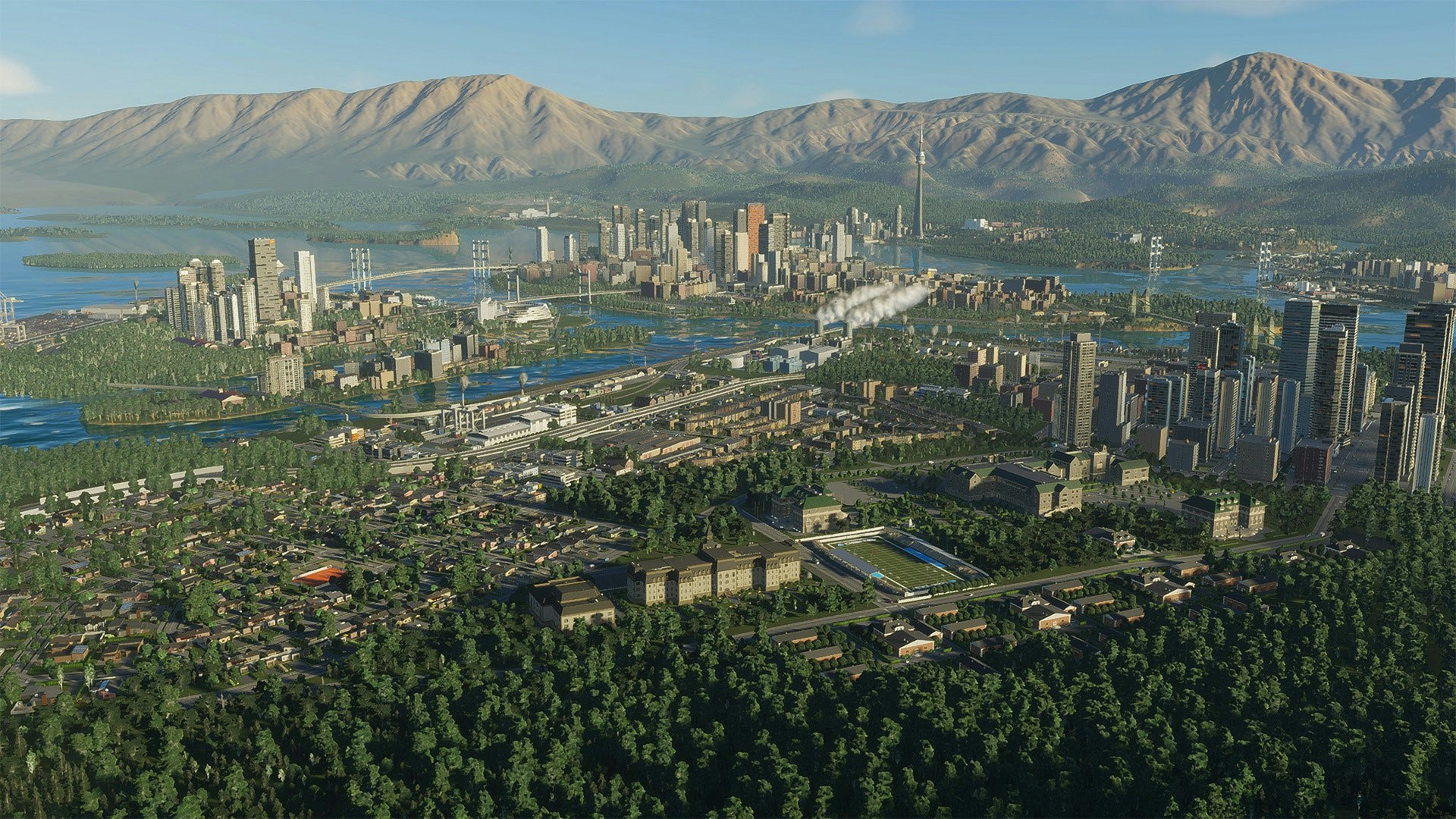
In the eight years since its release, Cities: Skylines has become both a landmark and an albatross. The gold standard in city building in the wake of SimCity’s shocking implosion, years of DLC have made it expensive and confusing for neophytes (all 59 add-ons are $377.97, although the essentials are frequently on sale) and a resource hog bloated by inefficiencies and mods.
Cities: Skylines II is as much a fresh start as a sequel. Many of the ideas introduced in C:S1’s paid expansions are gone. You can no longer build elaborate college campuses or sprawling nature reserves, novel transport options like blimps have been mothballed, policy decisions like smoking bans have been stripped down, and you won’t be throwing any music festivals.
But C:S2 isn’t just an excuse to re-release old DLC with better graphics. Cities: Skylines, for all its features, had begun to feel like a dozen different ideas stapled onto a rickety frame. Now, many of its concepts have been smartly streamlined. Roads, the bugaboo of many a newbie, are far more intuitive, and you no longer have to plaster pipes everywhere to keep water flowing. In other words, C:S2 wants you to focus on building rather than busy work.
Cities in Motion
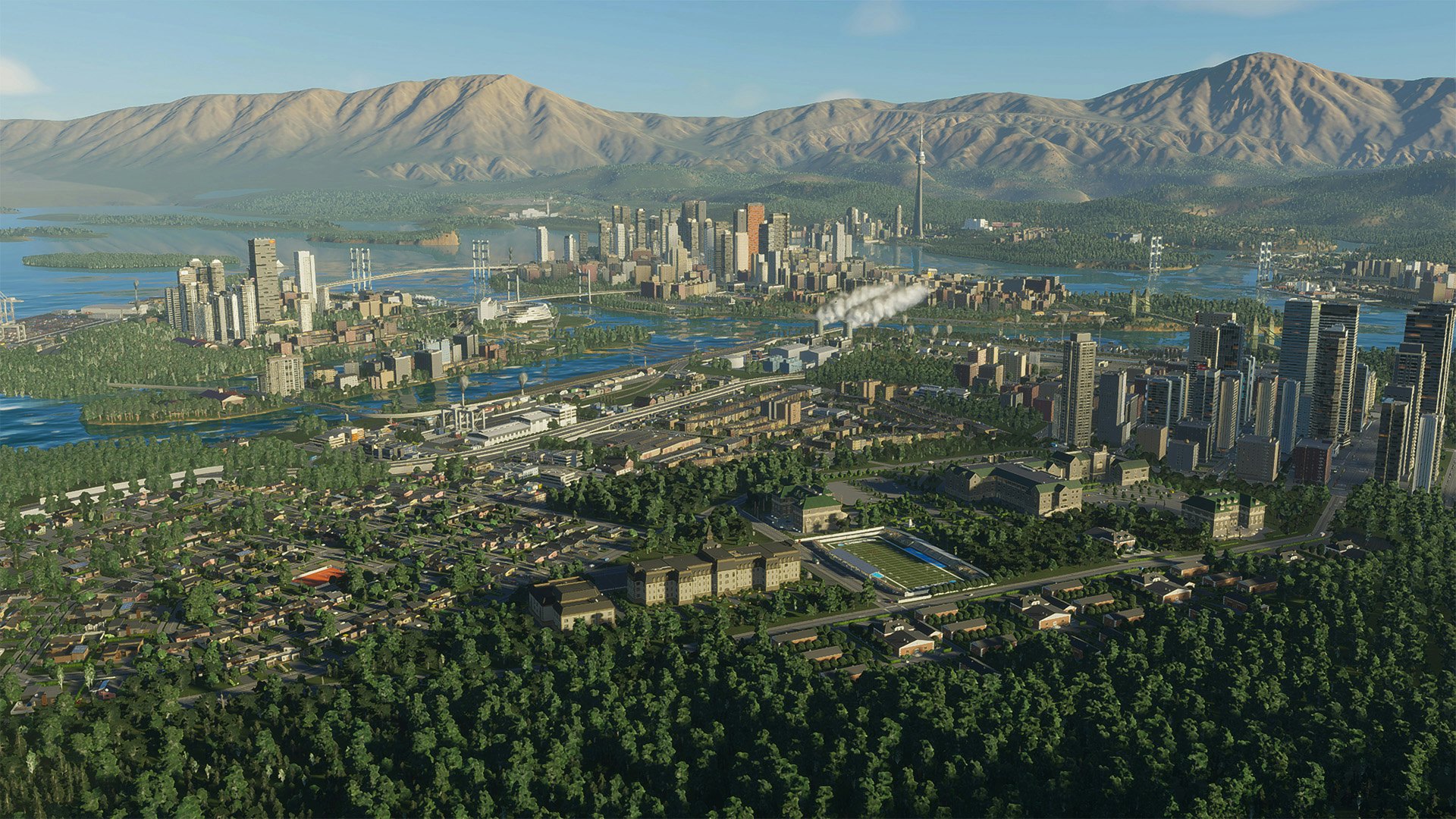
Cities: Skylines II makes a strong first impression. It loads quicker than its predecessor, the interface is clean and intuitive, and tutorials walk you through the basics of power, sewage, and other essentials C:S1 largely left you to puzzle out. The onboarding process is smoother here.
C:S2 is a sandbox game, but players are encouraged to reach a series of milestones by growing their population and keeping citizens happy. To do this, you’ll need to balance residential, commercial, and industrial zoning while providing services and keeping your cash flow positive. Your citizens will demand more housing or office space as their needs change, and you’ll have to obey a few logical rules, like the fact that no one wants to live next to a coal plant. Beyond that, you’re free to build your efficient utopia — or incompetent dystopia — however you see fit.
Milestones unlock new powers, like the ability to pass recycling laws or take out larger loans. They also grant you permits to buy more land, and development points to unlock special buildings. Key infrastructure like bus depots and fire halls automatically become available over time, but you can choose to focus on making your city an educational center or green power paradise. Impatient or experienced players can give themselves immediate access to everything, but the milestone system helps ease people into the deep end.
Unfortunately, there are a few pacing oddities. It’s easy to quickly unlock recycling centers, for example, but they’re so expensive you’ll have to wait quite some time to actually build one, which makes you feel like you wasted your points.
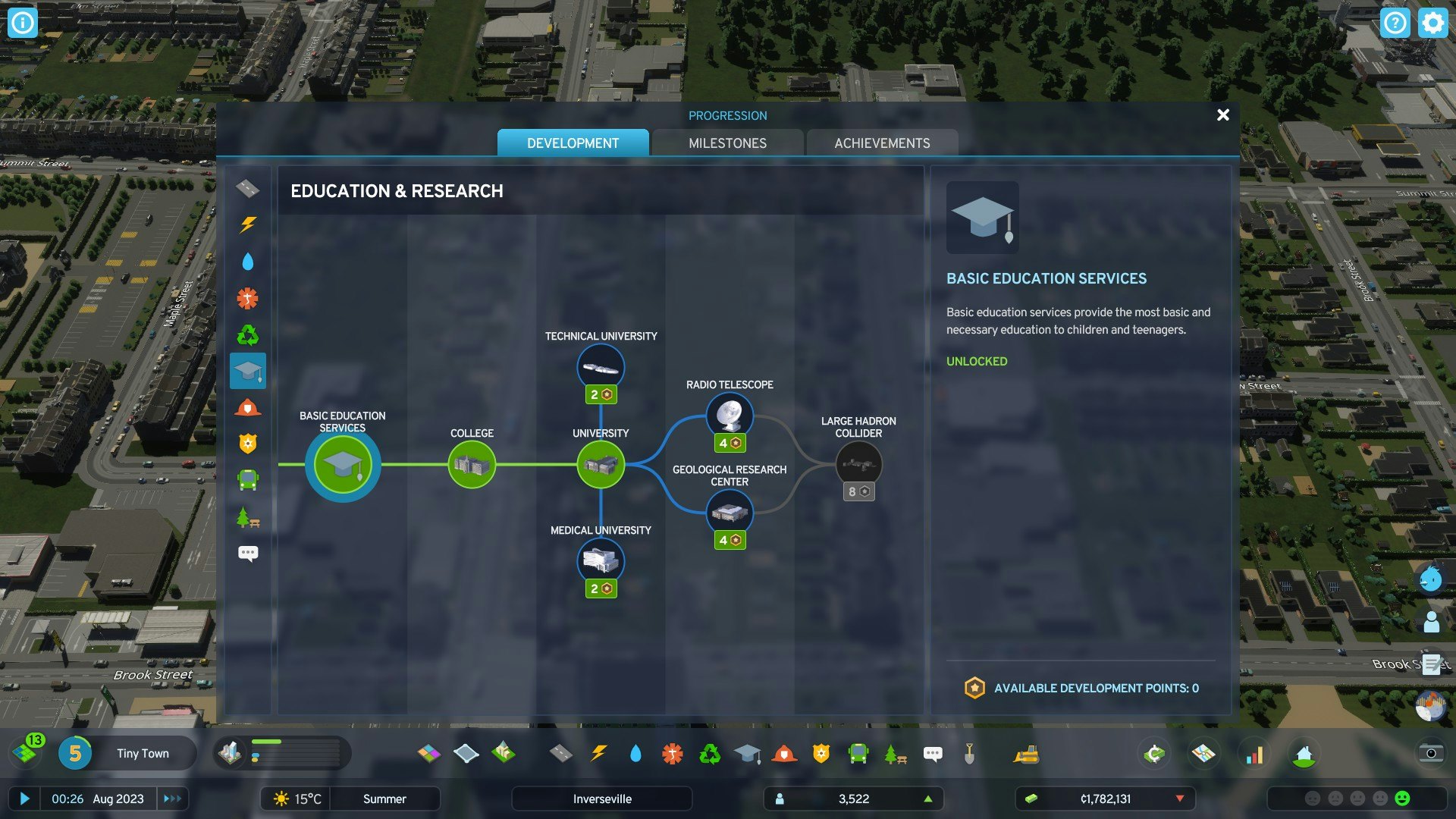
Cities: Skylines 2 is great at explaining how and why to build what you unlock, but the question of what to build is a little more confusing. I built a centralized, well-funded medical center that operated at peak efficiency, yet citizens still griped about Inverseville’s atrocious healthcare.
Trying to give your people everything is expensive. C:S2 gave me reams of money, but I spent most of my time losing it — even after I began selling my excess resources. Unless I wanted to raise taxes into the stratosphere or eliminate the entire school system, there wasn’t an obvious fix (although playing with infinite money is an option). Franchise veterans may scoff at my mismanagement, but I suspect newbies will be confused. A little in-game guidance on budgets, exports, and supply chains would be appreciated.
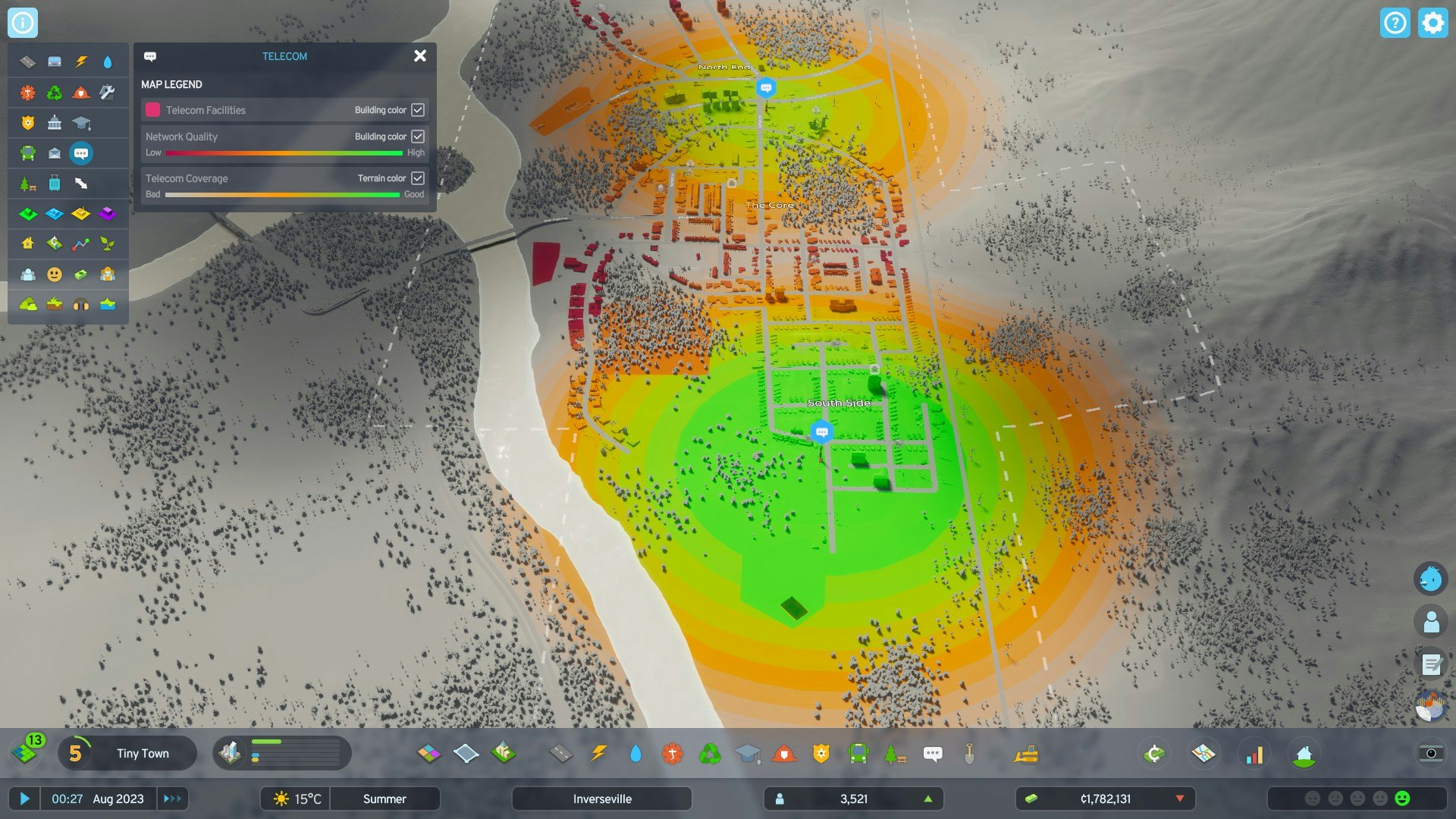
Still, the core gameplay is solid to the point of addicting. It’s tremendously satisfying to transform a village that doesn’t even have a mailbox into a metropolis sporting its own space center. The milestone pacing could maybe be tweaked — I was sometimes just sitting around waiting for new buildings to unlock — but that I was so eager for more says something in its own right.
Economies of Scale
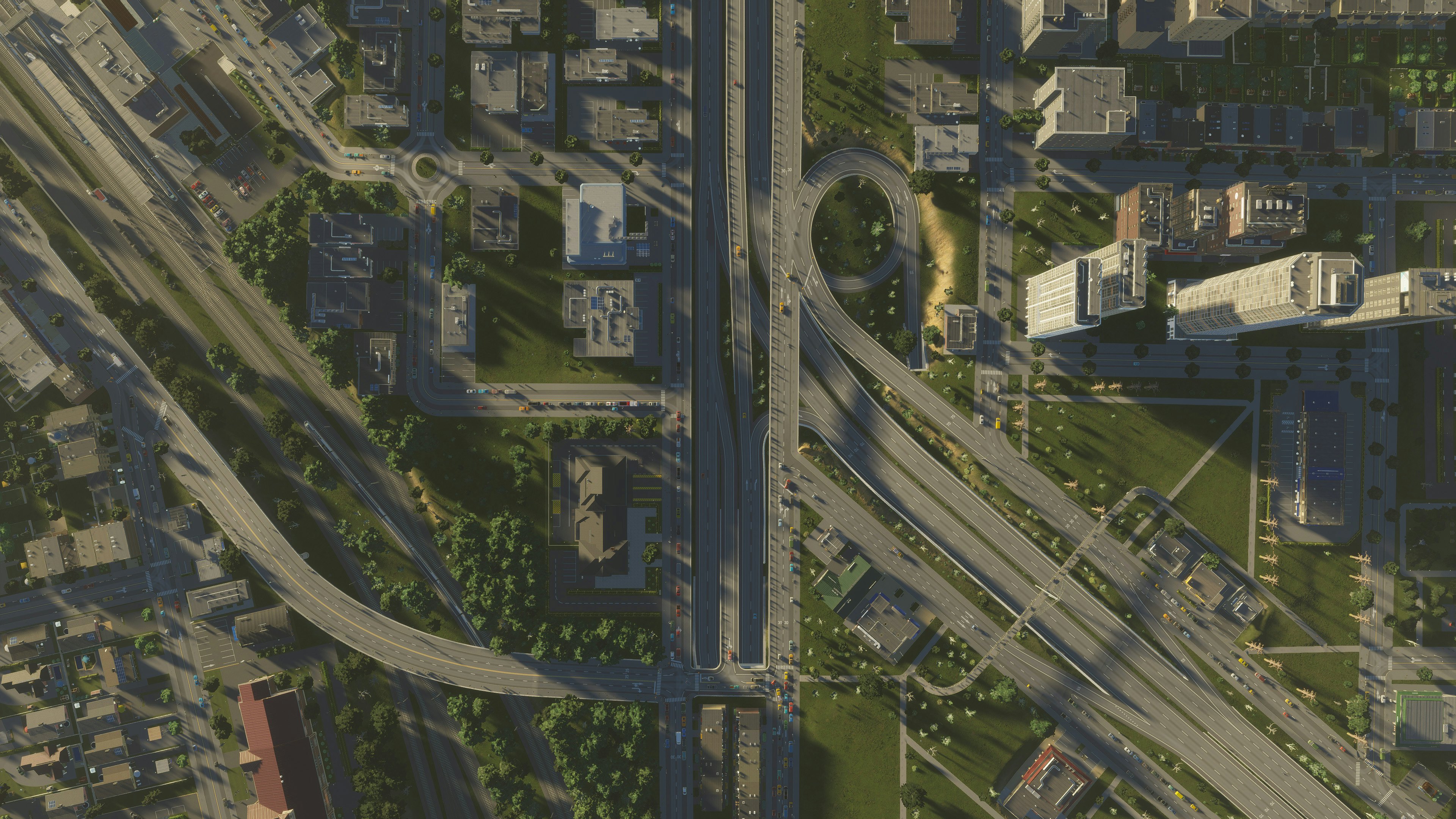
Cities: Skylines II wants every building to matter. Your neighborhoods will have fewer houses than in C:S1, but they’ll be far more detailed. That’s good, but it’s a little underwhelming to see long rows of houses repeat two or three models. This is somewhat mitigated by the option to swap between European and North American styles, and your residents will begin to demand a variety of densities, like towering apartment blocks or mixed units with ground-floor businesses. Still, sometimes I felt I was churning out dull, cookie-cutter suburbs.
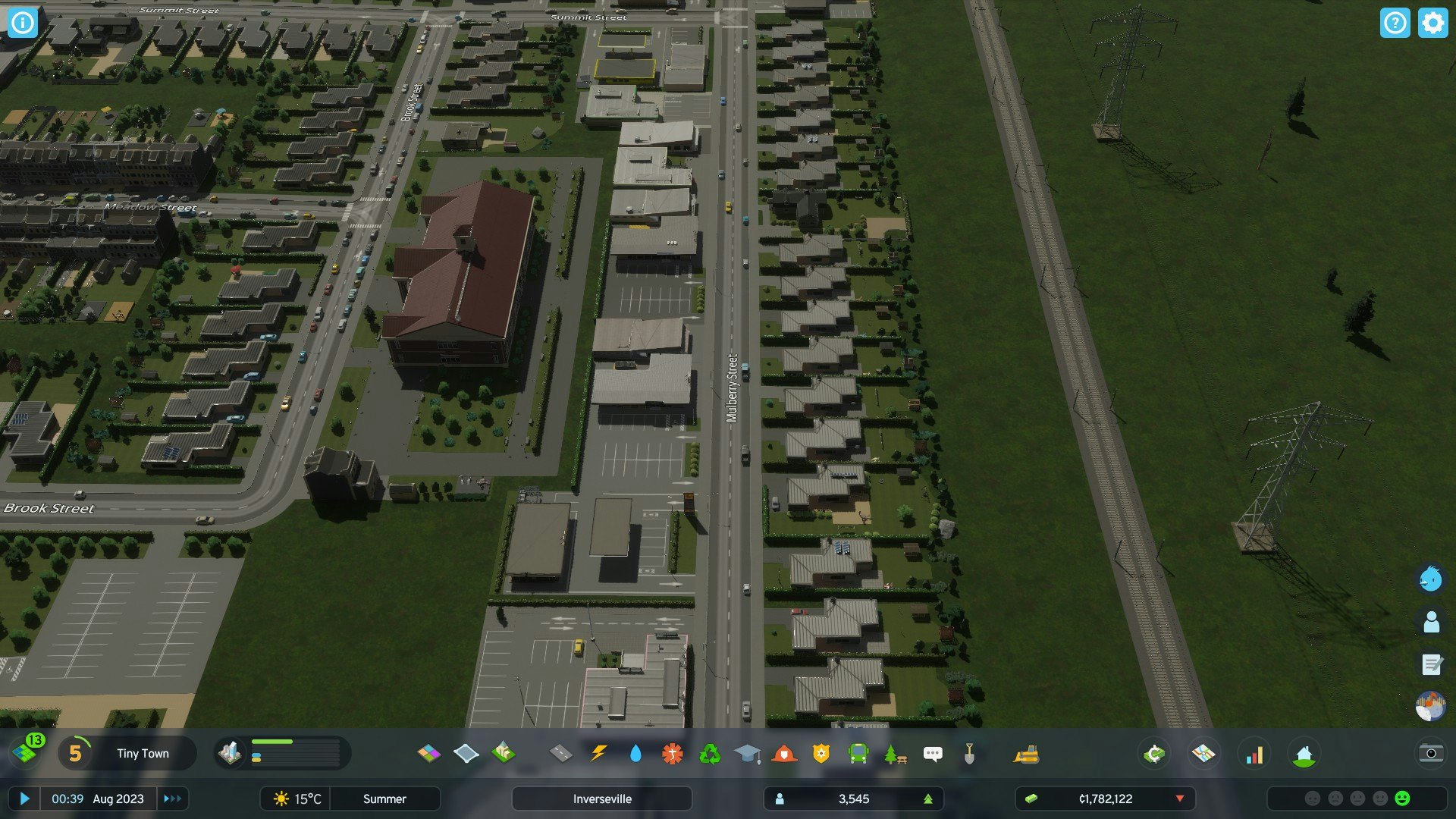
What’s more effective is the sheer size of buildings like landfills, cemeteries, and schools. These are huge to the point where you’ll need to plan entire districts around them, and many can be upgraded with new wings and features as your city grows. This creates a few bizarre abstractions — when Inverseville hit 2,500 people it already had a college and two medical centers — but it’s satisfying to slowly expand an elementary school rather than spam a dozen of them to meet demand. Bizarrely, this attention to scale doesn’t extend to the specialized industries that will buttress your economy; my forestry empire, which produced tons upon tons of logs, was represented by a couple shacks and a single vehicle.
Cities: Skylines II also puts a greater emphasis on the people occupying your city, allowing you to track individual citizens from birth to the grave and drill down on economic demographics in granular detail. Some of these features feel like novelties, but others — like the fact citizens now park their cars rather than pull them out of their pockets — help make your city feel alive. It’s fun to just sit back and watch all the little pieces you placed interact.
Speed Bumps

Paradox Interactive is infamous for publishing titles in an unsteady state, and Cities: Skylines II is, unfortunately, no exception. My gaming laptop is no slouch, but quick zooms and pans on even modest settings caused the game to freeze for up to 15 seconds before jolting back to life. Reviewers were told optimization would be improved before launch, and that “optimization is something we will work on continuously also after release,” but recent statements by developer Colossal Order suggest it will take months to fix. CO has been put in a tough position, but the problem has to be a knock against C:S2 upon release. The game simply isn’t quite finished.
In what was either a glitch or a very strange design choice, Cities: Skylines II sometimes insisted new businesses and residences were open even though construction cranes still occupied their footprints. At one point, I had an entire neighborhood of cranes supposedly occupied by productive citizens. Some combination of reloading, graphical tweaks, and waiting solved the issue, but it was a jarring oddity. So were my attempts to build farms that vanished into thin air upon being placed, forcing me to reload and try again.
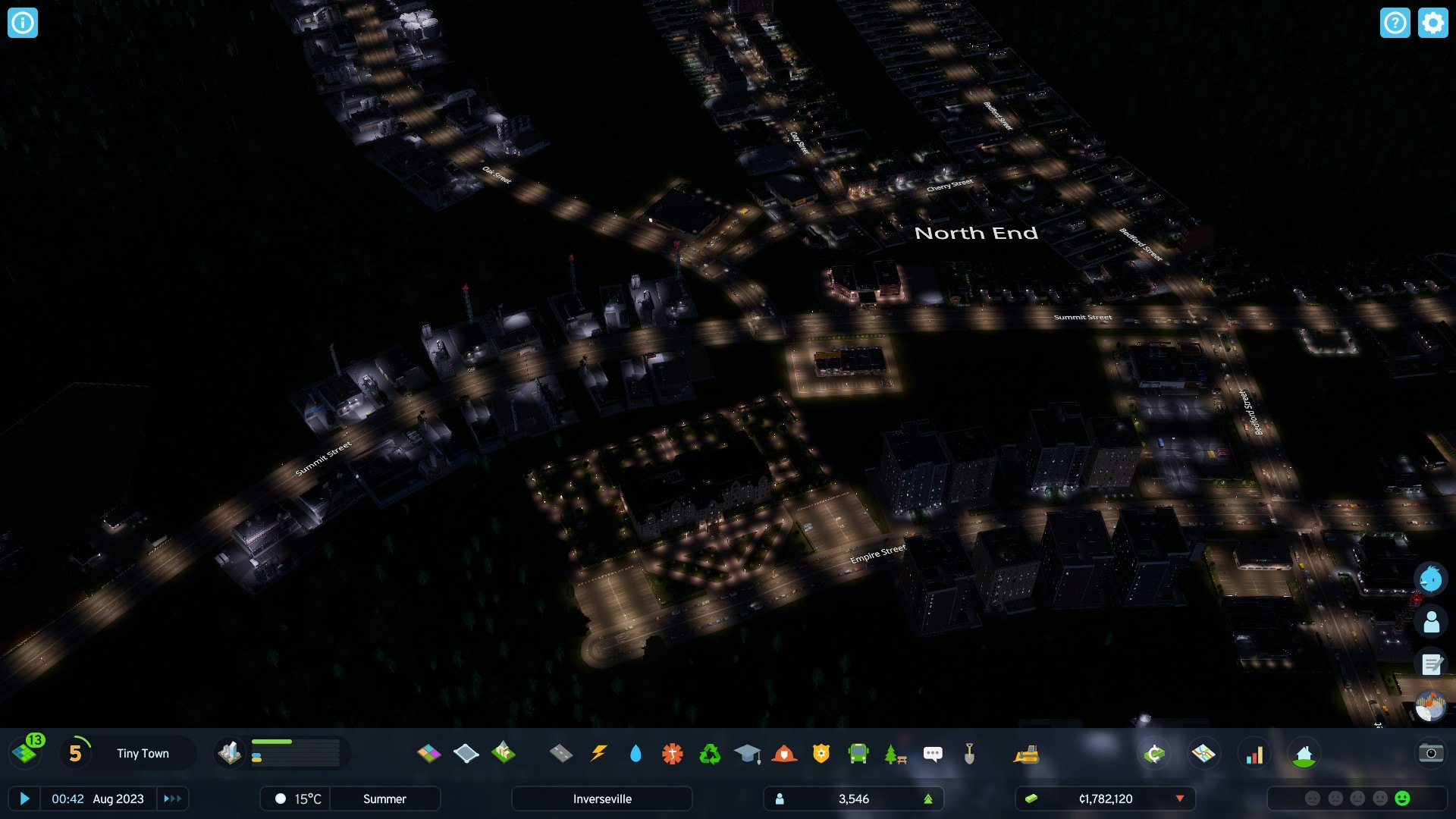
Then there’s the in-game radio, which provides your soundtrack. In what initially felt like a clever idea, ad breaks comment on the state of your city. (If there’s a demand for housing, the radio hosts will mention it.) The concept seems smart... until I got half a dozen air-quality PSAs over the course of an hour because a single household lived a little too close to the industrial sector. Ads can also be turned off, but it’s annoying to have to immediately disable features meant to give the game more life.
These are quibbles, but given that C:S1 is a beloved flagship title that moved over 12 million copies, Paradox needs to put its best foot forward here. Instead, it feels like the studio tripped over itself in its rush to get out the door. It’s still a solid starting point if you’re new to city simulations, and while returnees may miss some of C:S1’s more detailed and whimsical features, popping back into it made me long for Cities: Skyline II’s UI. Despite its flaws, it feels like a necessary iteration, one that will move the franchise into a new era.
But it’s how this fresh start is used that will determine C:S2’s long-term health, and you can probably wait a few months as they iron out the kinks. It’s hard to be too optimistic about a game being shoved out with performance issues and a lack of Steam Workshop integration, but there’s a strong foundation here. If Paradox keeps building on it, people will come.
7/10
Cities: Skylines II launches on October 24 for Game Pass on PC. A PlayStation 5 and Xbox Series X/S launch is planned for Q2 2024.
INVERSE VIDEO GAME REVIEW ETHOS: Every Inverse video game review answers two questions: Is this game worth your time? Are you getting what you pay for? We have no tolerance for endless fetch quests, clunky mechanics, or bugs that dilute the experience. We care deeply about a game’s design, world-building, character arcs, and storytelling come together. Inverse will never punch down, but we aren’t afraid to punch up. We love magic and science-fiction in equal measure, and as much as we love experiencing rich stories and worlds through games, we won’t ignore the real-world context in which those games are made.







